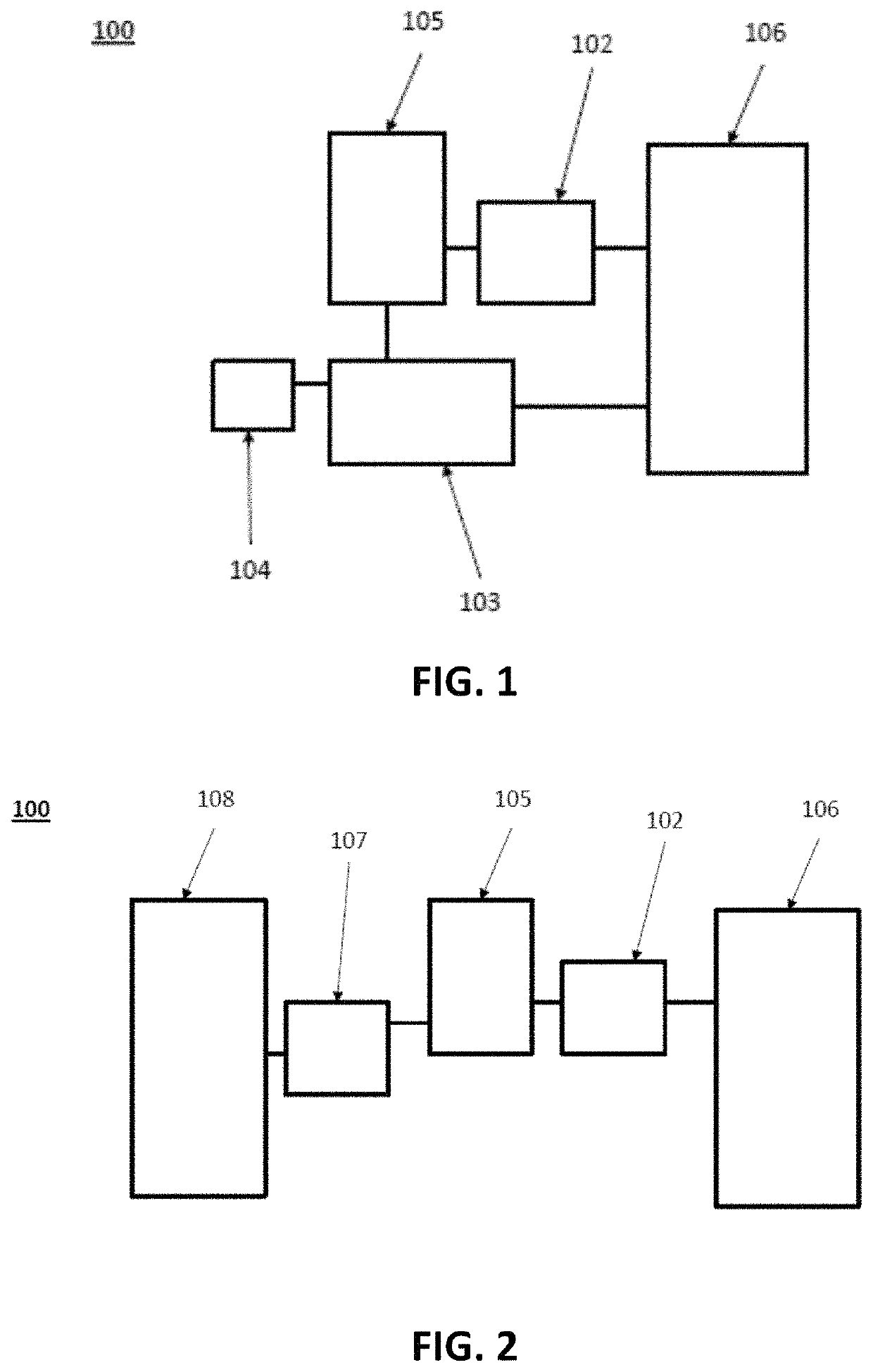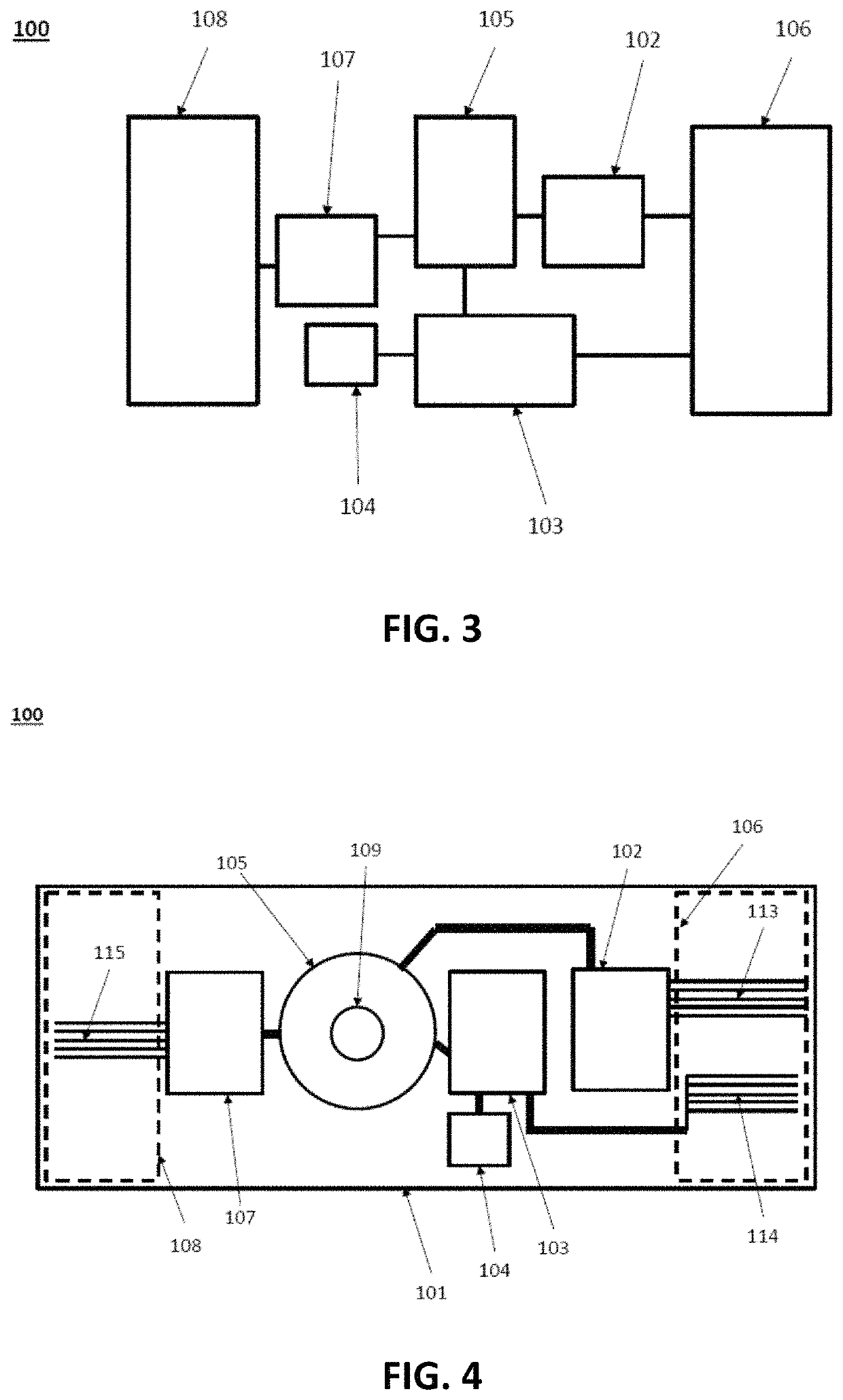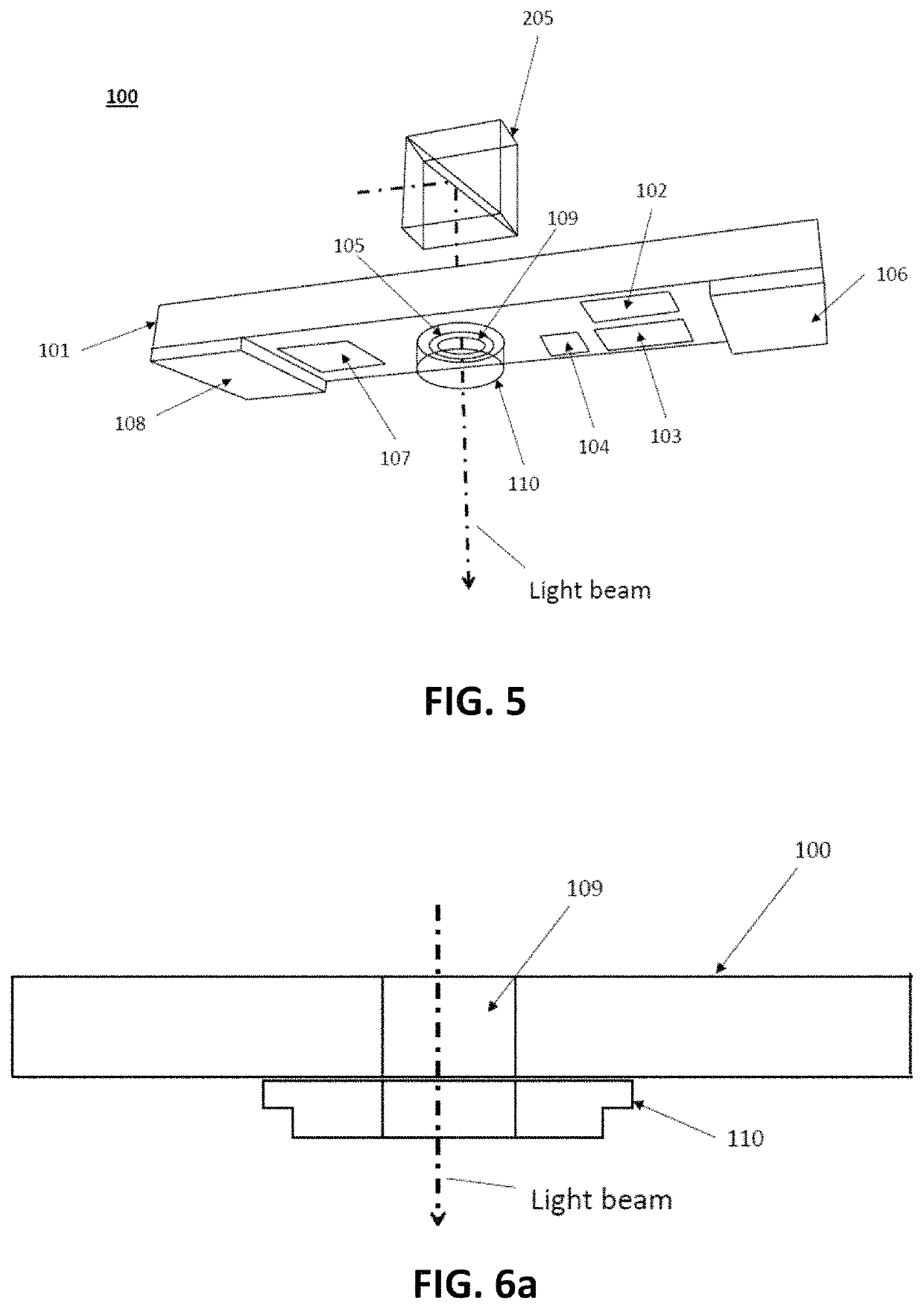Device and method for non-invasive measuring of analytes
a non-invasive and analyte technology, applied in the direction of optical radiation measurement, diagnostics using spectroscopy, instruments, etc., can solve the problems of limiting the applicability of the raman technique to routine non-invasive measurements, time-consuming and cumbersome process, and difficulty in quantifying the concentration of a particular analyte, etc., to achieve the effect of fast measurement of an analy
- Summary
- Abstract
- Description
- Claims
- Application Information
AI Technical Summary
Benefits of technology
Problems solved by technology
Method used
Image
Examples
example
[0108]When the integrated circuit comprises three active electric component layers, each layer comprising an optical unit, the light coupler of the first layer may be configured to couple light with a wavelength of 820-850 nm into the RAMAN spectrometer of the optical unit of the first layer. The light coupler of the second layer may be configured to couple light with a wavelength of 850-880 nm into the RAMAN spectrometer of the optical unit of the second layer. The light coupler of the third layer may be configured to couple light with a wavelength of 880-910 nm into the RAMAN spectrometer of the optical unit of the third layer. In this configuration, the integrated circuit is capable of receiving and spectrally resolving RAMAN scattered light with a wavelength of 820-910 nm. In this example, the wavelength ranges of different light couplers are adjacent to extend the wavelength range of the integrated circuit.
[0109]To separate different active electronic component layers from each...
PUM
| Property | Measurement | Unit |
|---|---|---|
| wavelength | aaaaa | aaaaa |
| wavelength | aaaaa | aaaaa |
| wavelength | aaaaa | aaaaa |
Abstract
Description
Claims
Application Information
 Login to View More
Login to View More - R&D
- Intellectual Property
- Life Sciences
- Materials
- Tech Scout
- Unparalleled Data Quality
- Higher Quality Content
- 60% Fewer Hallucinations
Browse by: Latest US Patents, China's latest patents, Technical Efficacy Thesaurus, Application Domain, Technology Topic, Popular Technical Reports.
© 2025 PatSnap. All rights reserved.Legal|Privacy policy|Modern Slavery Act Transparency Statement|Sitemap|About US| Contact US: help@patsnap.com



